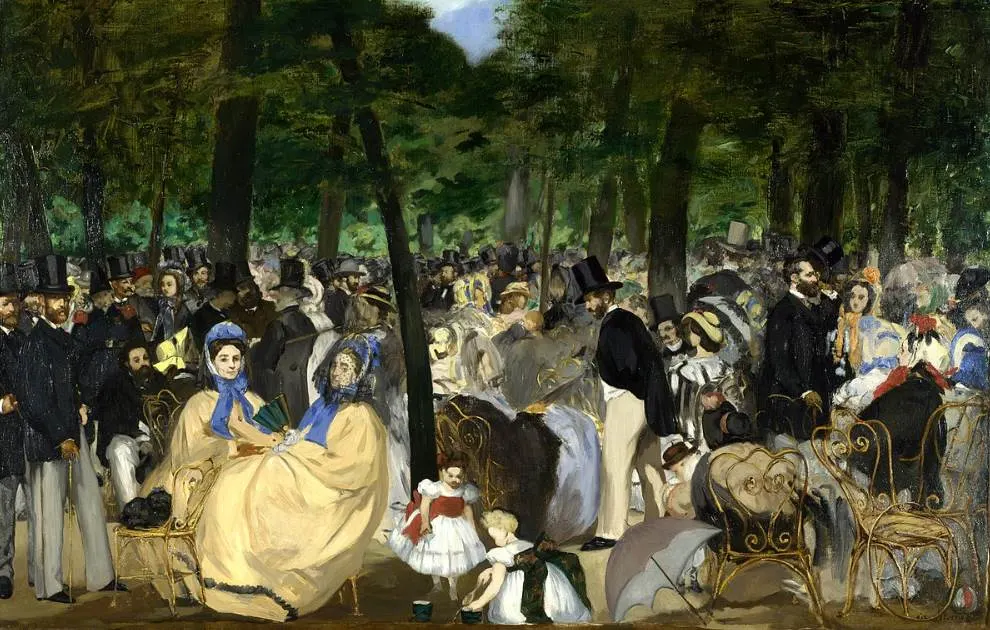When a new art movement emerged in the second half of the 19th century, it faced a lot of opposition from academic critics in France.
The Impressionist artists produced artworks that focus on one’s perception of things rather than an exact depiction. Short and visible brushstrokes, often producing a sense of motion, are what defined this influential art movement of the 1870s and 1880s.
Romantic artists such as Eugène Delacroix (1798-1863) and J.M.W. Turner (1775-1851) produced Romantic paintings that served as a major source of inspiration for the Impressionists.
Plein-air painting became increasingly popular and many of the most famous Impressionist paintings were produced outdoors. The Impressionist movement evolved into Post-Impressionism and modern art of the 20th century.
In this article, you’ll discover some of the most famous Impressionist paintings ever produced, artworks that define one of the most influential art movements in modern history.
1. Impression, Sunrise – Claude Monet
- Date created: 1872
- Dimensions: 48 × 63 centimetres (18.9 × 24.8 inches)
- Location: Musée Marmottan Monet, Paris, France
Impression, Sunrise or “Impression, Soleil Levant” isn’t just one of the most famous Impressionist paintings ever created, but also the work that coined the term of the art movement. It depicts a hazy scene of the port of Le Havre, the hometown of Claude Monet (1840-1926).
He was the leading figure in the early phase of the Impressionist movement and his entire oeuvre of paintings consists of this style. It was one of the paintings that were exhibited at the “Exhibition of the Impressionists,” the first exhibition of this group of artists, in 1874.
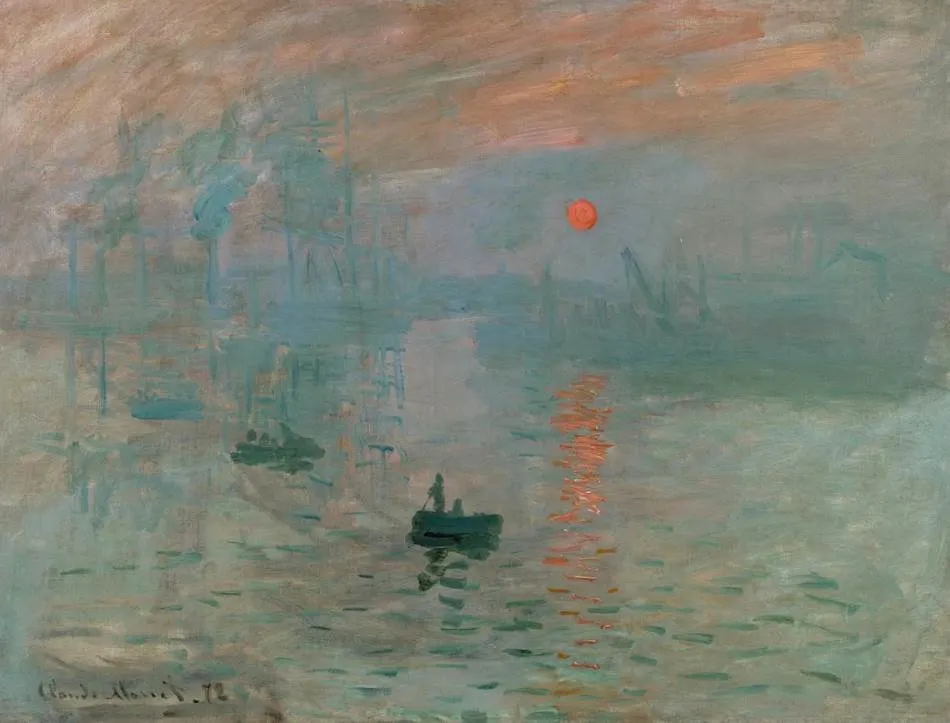
2. Dance at Le Moulin de la Galette – Pierre-Auguste Renoir
- Date created: 1876
- Dimensions: 131 × 175 centimeters (52 × 69 inches)
- Location: Musée d’Orsay, Paris, France
Dance at Le Moulin de la Galette or “Bal du Moulin de la Galette” is one of the most popular Impressionist paintings by PIerre-Auguste Renoir. It depicts a lively scene at the Moulin de la Galette in the Montmartre district of Paris. Here we can see how working-class Parisians spent their Sunday afternoons.
The painting was in the possession of French Realism artist Gustave Caillebotte (1848-1894) who served as a patron for the Impressionists. It only came into the possession of the French Republic following his death and hung subsequently at the Musée du Luxembourg, the Louvre Museum, and the Musée d’Orsay.
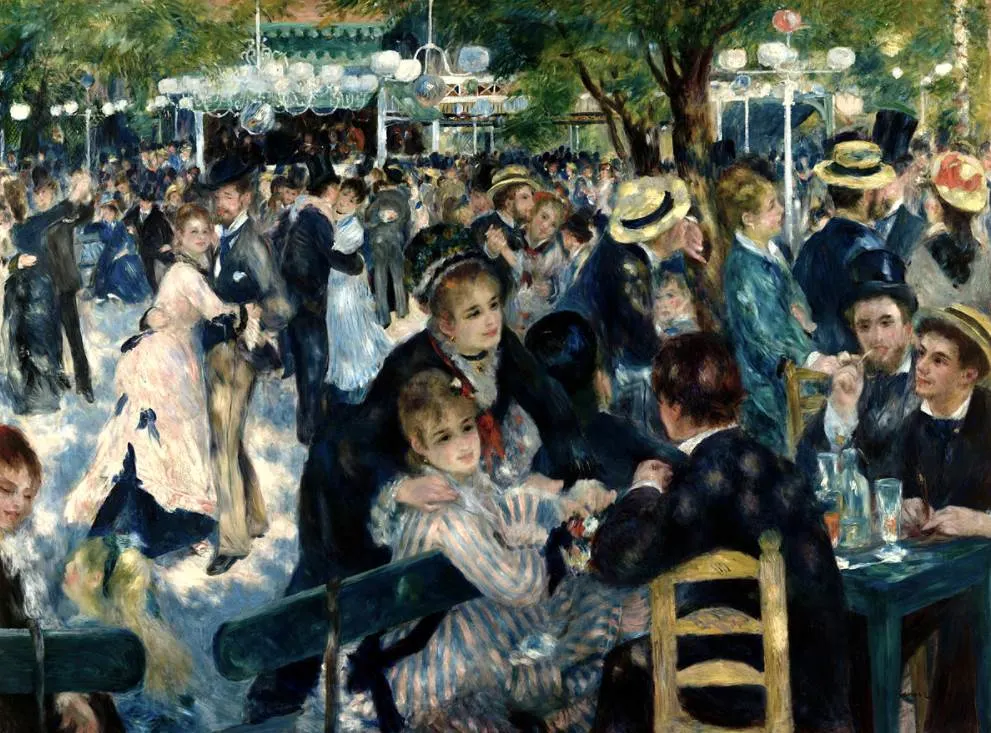
3. The Luncheon on the Grass – Édouard Manet
- Date created: 1863
- Dimensions: 208 × 264.5 centimeters (81.9 × 104.1 inches)
- Location: Musée d’Orsay, Paris, France

The Luncheon on the Grass or “Le Déjeuner sur l’Herbe” is one of the most iconic paintings by Édouard Manet (1832-1883), a French artist who played a pivotal role in the transition of Realism to Impressionism. This is emphasized by the fact that it was completed over a decade before Monet painted Impression, Sunrise.
The painting was originally referred to as “Le Bain” and depicts a relatively realistic scene featuring a nude female in the foreground, and a bathing woman in a hazy scene in the background. The painting was rejected for the Paris Salon of 1863 due to its peculiar content. Regardless, it became one of the most influential paintings of the 19th century.
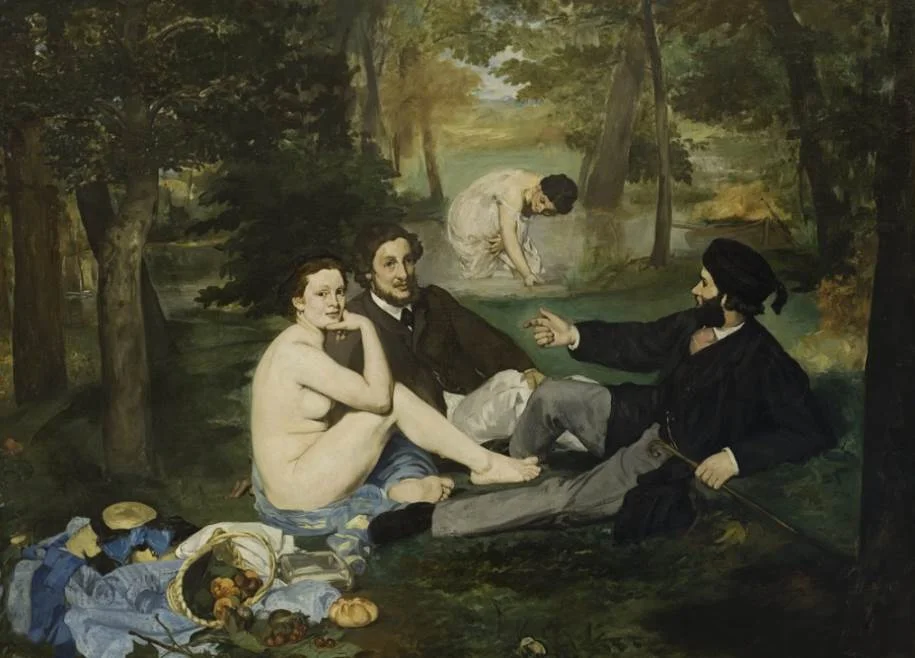
4. The Boulevard Montmartre at Night – Camille Pissarro
- Date created: 1897
- Dimensions: 53.3 × 64.8 centimeters (21 x 25.5 inches)
- Location: National Gallery, London, United Kingdom
The Boulevard Montmartre at Night is one of the 14 paintings of a similar subject painted by Camille Pissarro. As the name of the painting suggests, it depicts one of the major streets in the Montmartre neighborhood of Paris, an area also known as the artistic quarter.
The 14 paintings can be seen as the artist experimenting with the different types of light that are reflected at different times of the day and year. This particular painting is a night scene that highlights the warm feeling of the gas lamps that illuminated Paris in the late 19th century.
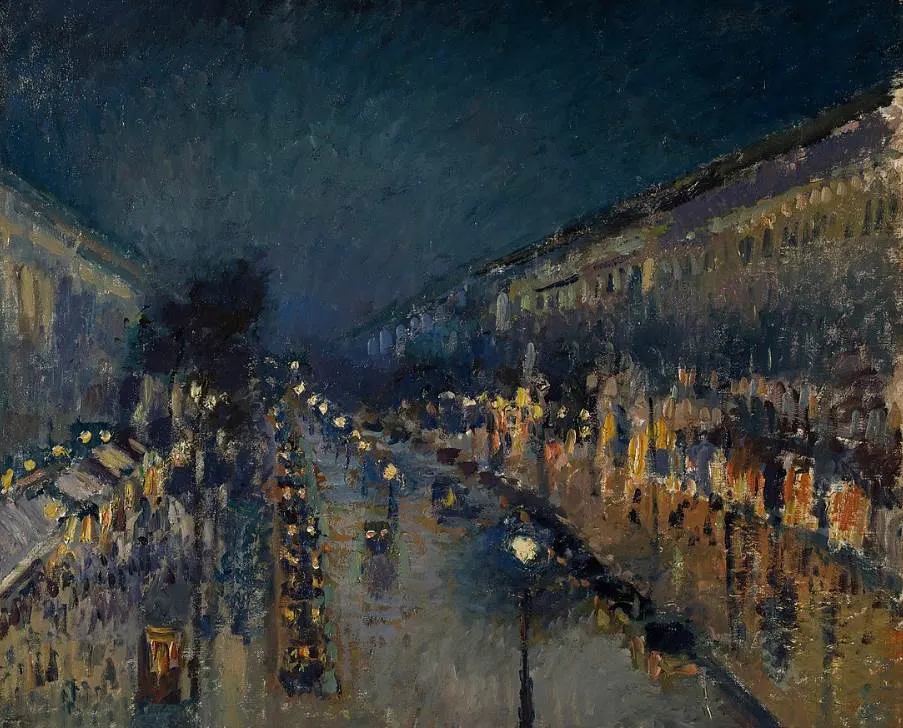
5. View of the Canal Saint-Martin – Alfred Sisley
- Date created: 1870
- Dimensions: 50 x 65 centimeters (19.6 x 25.5 inches)
- Location: Musée d’Orsay, Paris, France
View of the Canal Saint-Martin is one of the most famous paintings of Alfred Sisley (1839-1899), an English artist who was born in France and who spent most of his life there. The painting by Sisley depicts the Canal Saint-Martin in Paris. It’s just 4.6 kilometers (2.86 miles) long and connects the Seine River to the Canal de l’Ourcq.
The painting was acquired by French art dealers after it was exhibited at the Paris Salon of 1870 and was later bought by Dr. Paul Gachet (1828-1909) for just 170 francs. He was the doctor of Vincent van Gogh (1853-1890) during the final months of his life. His son donated it to the Louvre in 1951 and it was moved to the Musée d’Orsay where it still hangs today.
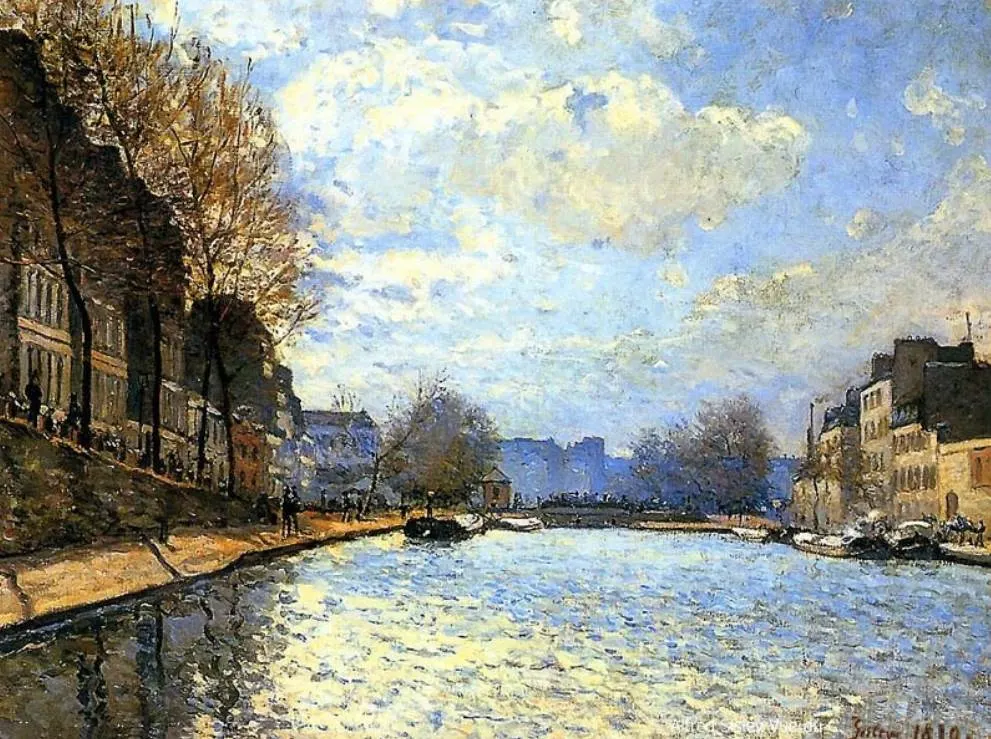
6. Luncheon of the Boating Party – Pierre-Auguste Renoir
- Date created: 1881
- Dimensions: 129.9 × 172.7 centimeters (51 × 68 inches)
- Location: The Phillips Collection, Washington, DC, United States
Luncheon of the Boating Party is another iconic painting by Pierre-Auguste Renoir. Completed just 5 years after his Dance at Le Moulin de la Galette, it features a similar, yet more detailed view of people having a good time on a boat in Paris.
The painting was exhibited in the 7th edition of the Impressionist Exhibition and was considered to be the best painting by several critics. It was bought for the large sum of $125,000 in 1923 by American industrialist Duncan Phillips. It’s now in the museum established from his collection of fine art.
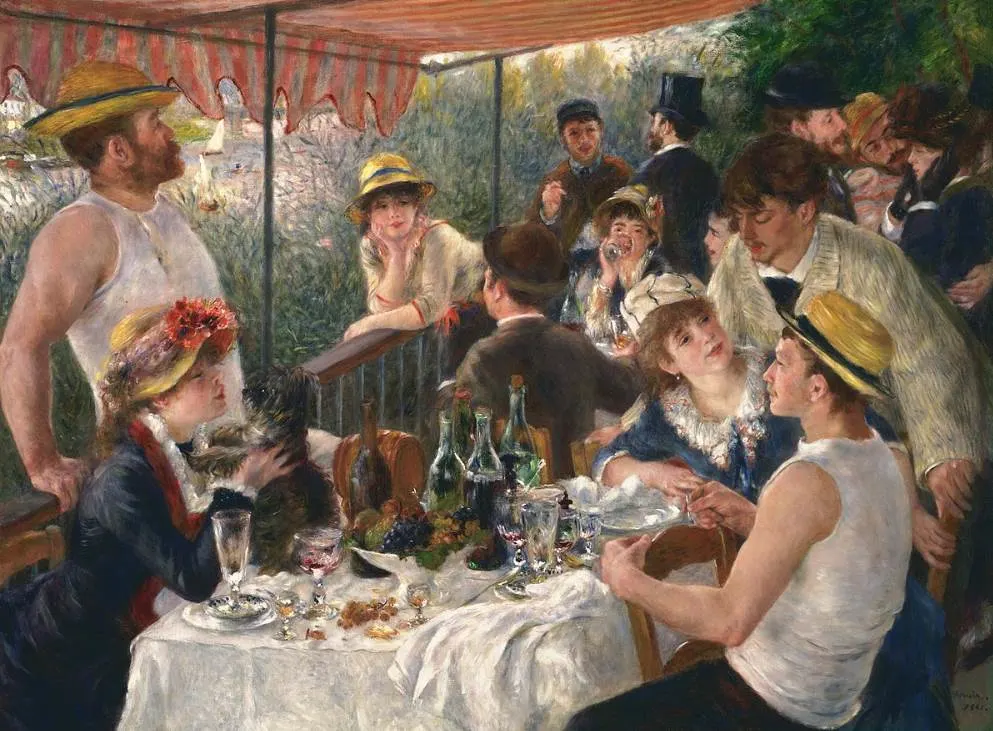
7. Woman with a Parasol – Claude Monet
- Date created: 1875
- Dimensions: 100 × 81 centimeters (39 × 32 inches)
- Location: National Gallery of Art, Washington, DC, United States
Woman with a Parasol – Madame Monet and Her Son is also known as “The Stroll” and depicts the wife of Claude Monet and their son. Camille Monet and Jean Monet are walking around in the fields near Argenteuil where the family lived in the 1870s.
This work is a prime example of an Impressionist painting as it depicts the main figures on a windy day. This allowed the artist to integrate the sense of motion that defines the art movement. Both her veil and dress can be seen blowing in the wind in this painting that was produced “en Plein air.”

8. The Harbour at Lorient – Berthe Morisot
- Date created: 1869
- Dimensions: 43 x 72 centimeters (16.9 x 28.3 inches)
- Location: National Gallery of Art, Washington, D.C., United States
The Harbour at Lorient is one of the best-known works of Berthe Morisot, one of “Les Trois Grandes Dames,” 3 women who were part of the Impressionist group in Paris in the 1860s and beyond. She was referred to as such together with Marie Bracquemond and American artist Mary Cassatt.
This painting depicts the harbor of the French city of Lorient in the Brittany region in northwest France. She spent her summer holidays here and became inspired by the scene during one of her trips. Morisot initially gave it to Édouard Manet as a gift and after changing hands multiple times it ended up in the United States in the 1950s.
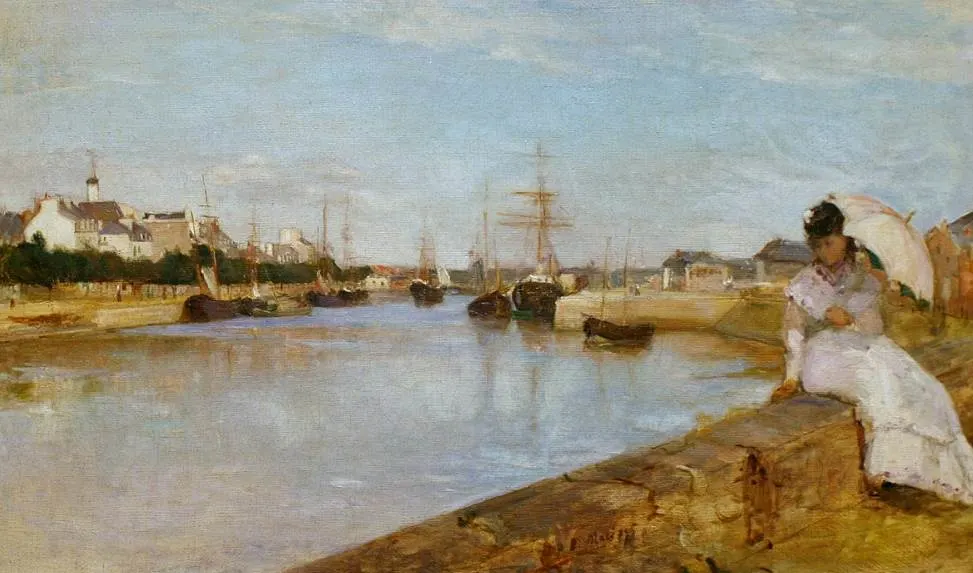
9. The Ballet Class – Edgar Degas
- Date created: 1871-1874
- Dimensions: 85 x 75 centimeters (33 × 30 inches)
- Location: Musée d’Orsay, Paris, France
The Ballet Class is a painting that was commissioned by a famous French opera singer named Jean-Baptiste Faure (1830-1914). He was also a great patron of the arts. This painting is one of two versions produced by Edgar Degas (1834-1917) and remarkably the first he started by the final one he finished.
The painting depicts a ballet class conducted by legendary ballet instructor Jules Perrot (18810-1892). The scene takes place in one of the rooms of the Paris Opera a year after it burned to the ground. Degas and the ballet instructor were friends so he was allowed access to one of his classes.

10. Music in the Tuileries – Édouard Manet
- Date created: 1862
- Dimensions: 76 × 118 centimeters (30 × 46 inches)
- Location: Hugh Lane Gallery, Dublin, Ireland
Music in the Tuileries can easily be described as one of Édourd Manet’s most influential paintings. It closely resembles the paintings of people enjoying themselves by Pierre-Auguste Renoir and it also had a profound effect on the works of Claude Monet at the start of the Impressionism art movement.
This painting depicts Parisians who are having a good time in the Tuileries Garden, a large public park in the heart of Paris not too far away from the Louvre Museum. This park was the venue of weekly concerts although there are no musicians visible in this painting. In line with what the Impressionists stood for, one has to perceive the scene as if there is music being played.
